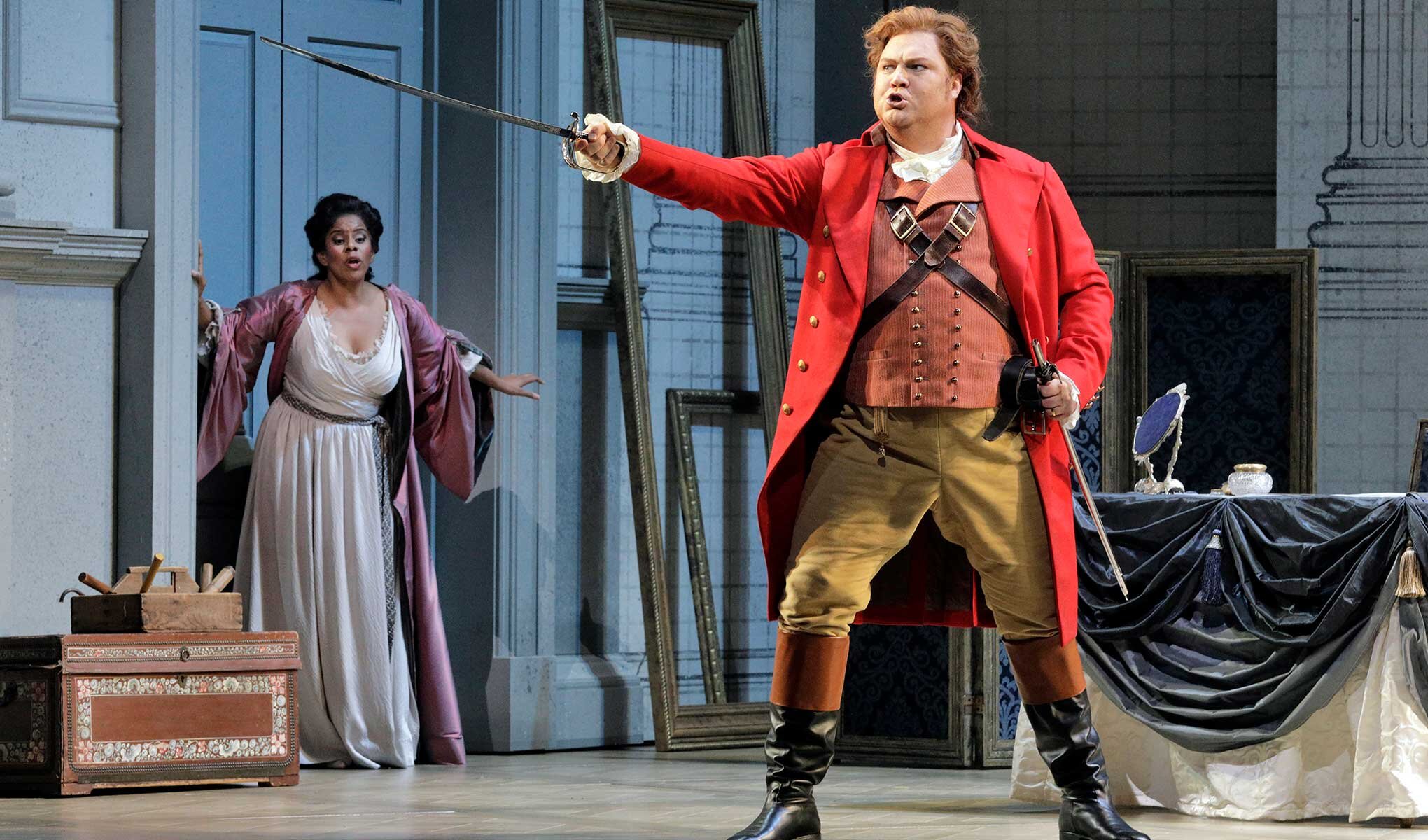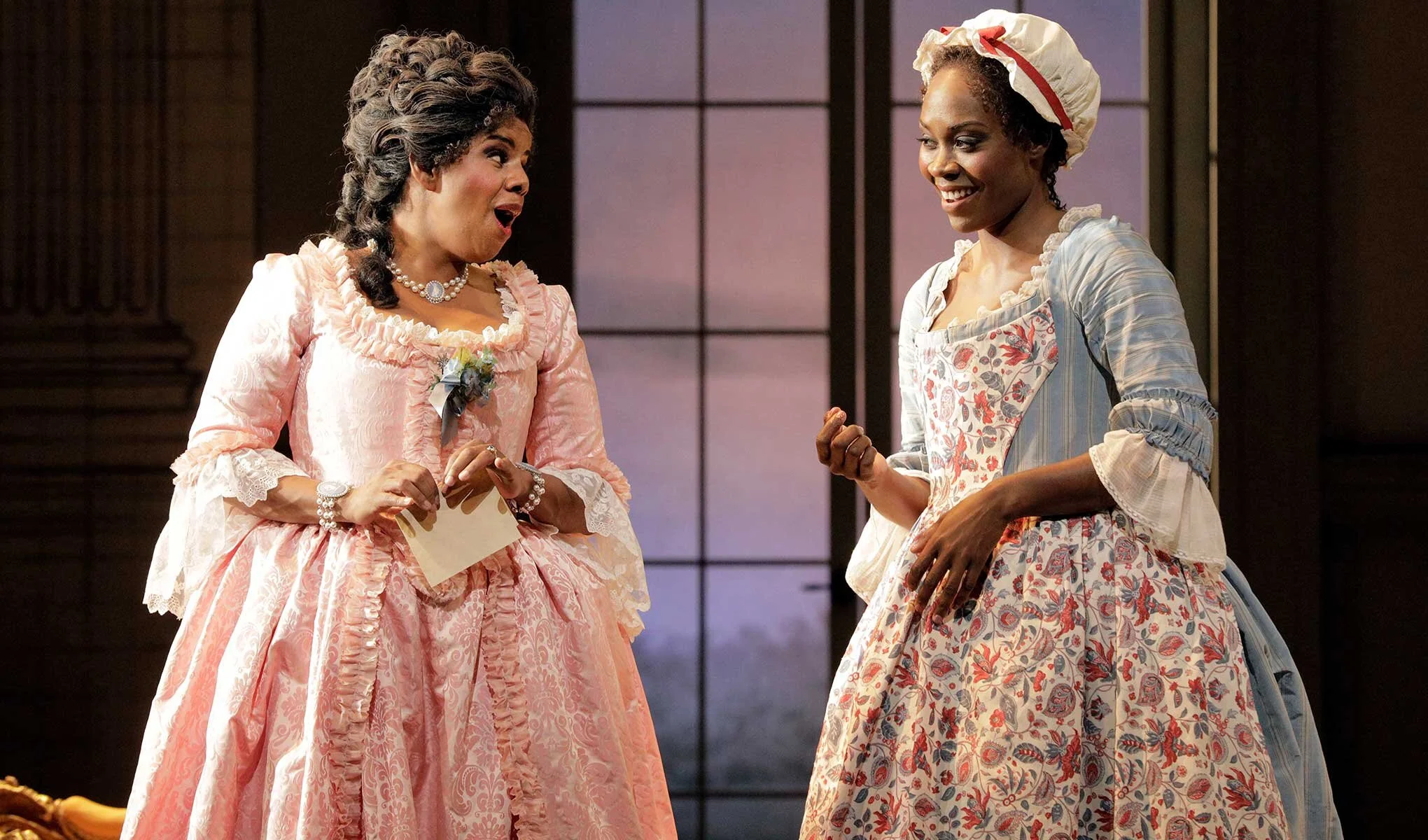Figaro’s Colorful Wedding, Set in Colonial America
/By Elsa Tranter
11/4/2019
Photo credit: Cory Weaver / San Francisco Opera
With all the natural and man-made disasters surrounding us, escape into comedic opera, well-staged and well-sung, is a special treat. That was surely the case with San Francisco Opera’s new production of Mozart’s Marriage of Figaro, last seen here five years ago. Canadian Michael Cavanagh’s new production is set in an American manor house in the late 18th century. It is the first part of a trilogy of the operas written by Mozart with the librettist Lorenzo Da Ponte. The production team led by Cavanagh is joined by Erhard Rom, set designer, Constance Hoffman, costume designer, and Jane Cox, lighting designer. The other two operas will be seen in the next two years. They are Cosi Fan Tutte, set in the late 1930s and Don Giovanni set in the dystopic future of 2080.
In the current production, everything was of a piece and worked well from start (architectural drawings on the curtain during the overture) to finish—garish lighting on the assembled cast (perhaps to indicate the final scene of Don Giovanni.) The sets moved fluidly around from room to room in the house and in the garden. One way that scene shifts were handled expeditiously was to have a solid screen come down behind the singers while they were singing so the stage could be re-set behind them. It was efficient but a little disconcerting. The colors for the sets and costumes used throughout were very colonial in nature—reminded me of the color chips at the paint store—“Colonial America”—with one notable exception, where Susana wore a shocking pink cape/hood, trimmed in fake fur, as a disguise—it was way too jarring.
The singers made a very good ensemble both vocally and visually. The title role was sung by American bass-baritone Michael Sumuel, who combined robust singing with playful movement throughout the evening. As his bride, Susana, Trinidadian soprano Jeanine De Bique made her debut in the role and to San Francisco audiences. Her voice didn’t have quite the same degree of projection as did his, but they made a very charming and playful couple.
The Count and Countess Almaviva were sung by two singers also making their San Francisco opera debuts—Hungarian baritone Levente Molnar, and American soprano Nicole Heaston; however, they have both sung these parts elsewhere. The count was suitably blustery and lecherous and the countess elegant and long-suffering, but again, the male voice was stronger and projected better. However, her third act, show-stopper aria ‘Dove Sono…’ was especially beautiful.
The trouser role of Cherubino was brilliantly sung by Italian mezzo-soprano Serena Malfi, who brought a lot of physicality to the part as well as a strong and sturdy vocal sound. She was paired, at the end, with the sprightly Canadian soprano Natalie Image as Barbarina. The comic relief included a splendid mezzo-soprano Catherine Cook as Marcellina (a role she’s sung many times here, always to perfection), American bass James Creswell as Bartolo, American tenor Greg Fedderly as Basilio, and S.F. chorister bass-baritone Bojan Knezevic as Antonio.
The music throughout was lush, melodic, upbeat and held together beautifully by the S.F. Opera orchestra under the able command of Hungarian conductor Henrik Nanasi, who was last seen and heard here in a first-rate Elektra in 2017. The chorus of women in various scenes added to the general richness of the evening, as usual under the direction of Ian Robertson. The complications of plot and general silliness of some of the shenanigans were not completely to my taste—I prefer tragedy and death to get a good catharsis—but they were all carried out with precision and finesse—nary a missed move that I was aware of. There was an extra long break at the second intermission, for which no explanation was given, so whatever glitch might have been happening back stage resolved itself.
It was an engaging, lighthearted romp through some spectacular Mozartian music and well worth seeing.
Elsa Tranter is a Bostonian who has lived in Berkeley for over 40 years and has been an opera goer for most of those years. She worked as a graduate student adviser at UC Berkeley and still attends Cal Performances regularly. Her favorite composer is Wagner and her favorite opera is Tristan und Isolde.






